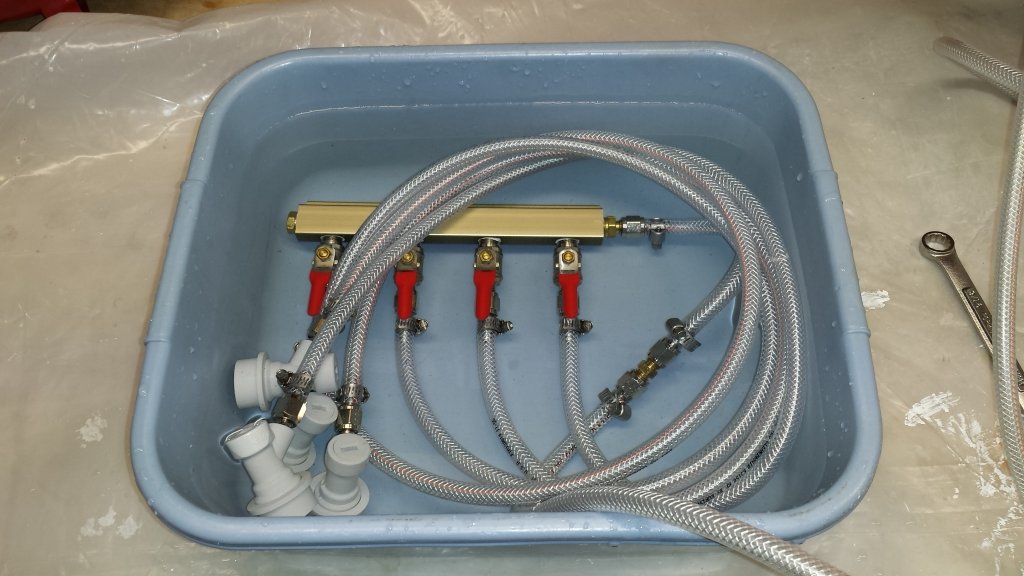Ralphie0523
Well-Known Member
- Joined
- Sep 16, 2019
- Messages
- 69
- Reaction score
- 35
Hi all,
I recently pulled the trigger on some kegs and the wife has given a green light to a kegerator. I am piecing this together from our current fridge we will make available for this build. I have been thinking of how to build the piping from CO2 to tap with what my requirements are:
1. Ability to burst carbonate and adjust pressure on a keg for lower/higher carbonation for specific styles. Ok if other kegs are all at same carb level.
2. Easy to maintain and rearrange/expand if needed.
3. Check valves put in the right spots to prevent back flow into the regulator.
I have come up with the following scheme:
From CO2 tank I will have a single regulator with dual output. This should fulfill requirement 1.
For requirements 2 and 3, I think the easiest is a duotight fitting setup for all connections, and use two tees and an elbow to allow up to three kegs at the same pressure. The adjustable pressure feed for a single keg will be a straight line to one gas in connector with a check valve on the line in case of an over full keg. Three keg line will have check valves on each line up to the tee or elbow and another check valve up to the regulator as a backup plan. This is all gas side.
Liquid side will be pretty simple, out to stainless shanks and faucets, hopefully I can snag a good deal on some Intertap or Perlick as the holidays approach. Or Santa will think I was good this year.
Hopefully this concept makes sense. Is there something I missed? I have done some research but know I don’t have all the answers. Based on looking around this made the most sense to me. Figured I would ask this forum due to the high number of knowledgeable people.
I recently pulled the trigger on some kegs and the wife has given a green light to a kegerator. I am piecing this together from our current fridge we will make available for this build. I have been thinking of how to build the piping from CO2 to tap with what my requirements are:
1. Ability to burst carbonate and adjust pressure on a keg for lower/higher carbonation for specific styles. Ok if other kegs are all at same carb level.
2. Easy to maintain and rearrange/expand if needed.
3. Check valves put in the right spots to prevent back flow into the regulator.
I have come up with the following scheme:
From CO2 tank I will have a single regulator with dual output. This should fulfill requirement 1.
For requirements 2 and 3, I think the easiest is a duotight fitting setup for all connections, and use two tees and an elbow to allow up to three kegs at the same pressure. The adjustable pressure feed for a single keg will be a straight line to one gas in connector with a check valve on the line in case of an over full keg. Three keg line will have check valves on each line up to the tee or elbow and another check valve up to the regulator as a backup plan. This is all gas side.
Liquid side will be pretty simple, out to stainless shanks and faucets, hopefully I can snag a good deal on some Intertap or Perlick as the holidays approach. Or Santa will think I was good this year.
Hopefully this concept makes sense. Is there something I missed? I have done some research but know I don’t have all the answers. Based on looking around this made the most sense to me. Figured I would ask this forum due to the high number of knowledgeable people.



